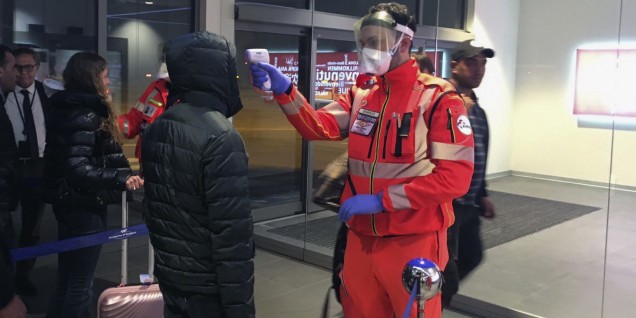(Travelers are screened at the airport in Bologna) –
by Andrew Spannaus –
Three weeks have passed since the first restrictions were announced in Northern Italy to combat the spread of the novel coronavirus; three weeks in which things have gotten much worse, quickly, making Italy the second hardest-hit country in the world at this point.
As of March 16, almost 28,000 people were known to be infected and over 2,000 deaths were attributed to COVID-19. The numbers have shot up over the past week, although cases are still low in many areas of the country, and the initial centers of the infection — a few small towns about 40 miles southeast of the metropolis of Milan — have seen almost no new cases in the last few days.
The whole country is now on a sort of lockdown: schools and churches are closed, as are restaurants, bars, and all other retailers except for food stores, pharmacies, and a few other “necessary” shops. Yet numerous companies remain open, so while remote work is encouraged as much as possible, many still go to work; and public transportation is still running. So “social distancing” here is not yet as severe as in Wuhan, the initial source of the outbreak in China.
Indeed, in addition to food shopping, people go out for walks or exercise, although police are now driving around telling everyone to “stay home,” the basic message transmitted at all levels of the institutions now.
From Reluctance to Rationing
Read the full article on Consortium News







March 16, 2020
Cultura, English, Interventi, Politica